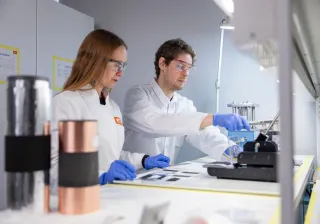Developing responsible research solutions is the core of VTT's responsibility and with them we will build a more sustainable future. It is important for us to develop environmentally friendly technology and to attend to the impact of our own activities. Our goal is to achieve carbon neutrality by 2030 and we have taken a significant step toward reducing our carbon footprint using electricity produced from renewable energy sources.
VTT defined the focal points of its corporate responsibility programme in 2020 and this year we will set the precise goals and indicators. One key goal that is also defined in the strategy is to be carbon neutral by 2030. To support this goal, a development programme was launched at VTT in which we take concrete measures and set schedules to make sure that our choices genuinely reduce absolute greenhouse gas emissions.
Electricity purchased from renewable sources halves VTT’s total emissions
A clear step toward carbon neutrality goals was taken at the beginning of this year when VTT started buying electricity produced exclusively from renewable sources. Carbon footprint calculations from earlier years show that emissions linked with electricity consumption by VTT properties have been more than half of VTT's total emissions, making them the largest source of emissions at VTT. With the help of purchased electricity produced from renewable energy sources, emissions from VTT's electricity consumption have been brought down to almost zero, which is a significant step on the way to reducing our carbon footprint.
The next goal is to examine possibilities of reducing emissions from heating
Work on behalf of sustainability is something that can never be finished, and our journey continues by ascertaining the potential for the reduction of all our emission sources. Using renewable electricity helped us reduce our emissions significantly, which allowed us to interpret other sources of emissions on a new scale and in relation with each other.
Our next goal is to examine the potential for reducing emissions from heating, which has been our second largest source of emissions right after electricity. At present we are assessing emissions linked with heating in different locations, and how they could be reduced, and if it is possible to implement the emission reductions on question. On a broader scale we are especially looking at the future development of the energy industry and of emissions from heating.



